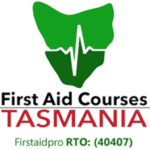“A person can bleed to death in less than 5 minutes”.
We know victims can die from uncontrolled bleeding in a matter of minutes, and there isn’t enough time to wait for the emergency medical responder to arrive.
Blood loss is the leading cause of preventable death following injury. Severe bleeding injuries often occur in multiple casualty events such as earthquakes, mass shootings, and everyday events like automobile crashes and industrial accidents.
In the past years, the news seemed full of never-ending incidents that took a number of people’s lives. Therefore in 2015, the ‘Stop the Bleed’, or the Bleeding control initiative, was launched to educate and empower citizens to stop life-threatening blood loss after unintentional injuries.
While the training to stop blood loss can save lives in mass casualties and shooting situations, it also comes into play in rural accidents.
Sometimes we forget that life in rural areas can be dangerous. They live in an unsafe state where most of their livelihood revolves around working with machines, ranching, coal mining and drilling rigs for oil.
Research suggests that death from injuries is higher in rural areas compared to urban areas. Twenty per cent of those deaths could have been prevented with proper and immediate treatment.
Bleeding control training has obvious benefits for rural residents. There could be nothing better for small communities than to undergo training. Most of them live far from the nearest hospital, and ambulances might take longer to arrive as they come from far away.
Rural advocates immediately recognised the need for broader application of Bleeding control training programs in rural areas. Having them trained in managing or treating any bleeding can save lives in an environment where the emergency medical response is hindered by distance.
“This is a mission. We need to get everybody taught,” said Dr Mary Aaland, director of rural surgery at the University of North Dakota.
“Like widespread CPR Training, the goal is for the Bleeding Control course to become a national training standard. We want everyone, regardless of age or background, to become first responders who can stop the bleed and save a life.”
What’s inside the Bleeding Control Kit?
Everyone is encouraged to assemble or purchase their bleeding-control kits and keep them accessible in case an emergency arises. Having access to the tools and how to use it can save precious minutes before the EMS is ready to take over.
A bleeding control kit includes:
- A permanent marker
- Commercially Available Tourniquet
- Trauma dressing or gauze
- Multiple pairs of nitrile gloves
- Pair of trauma shears
- Printed lifesaving instructions
First Aid certifications and Bleeding control training sessions are increasingly important nowadays. You don’t need to be a nurse or have an MD behind your name to treat blood loss. With the right training, you can help stabilise a victim and increase their chances of survival.
Find a First Aid and Bleeding control course near you. Call our team at 1300 029 132 or visit firstaidpro.com.au for more information.








